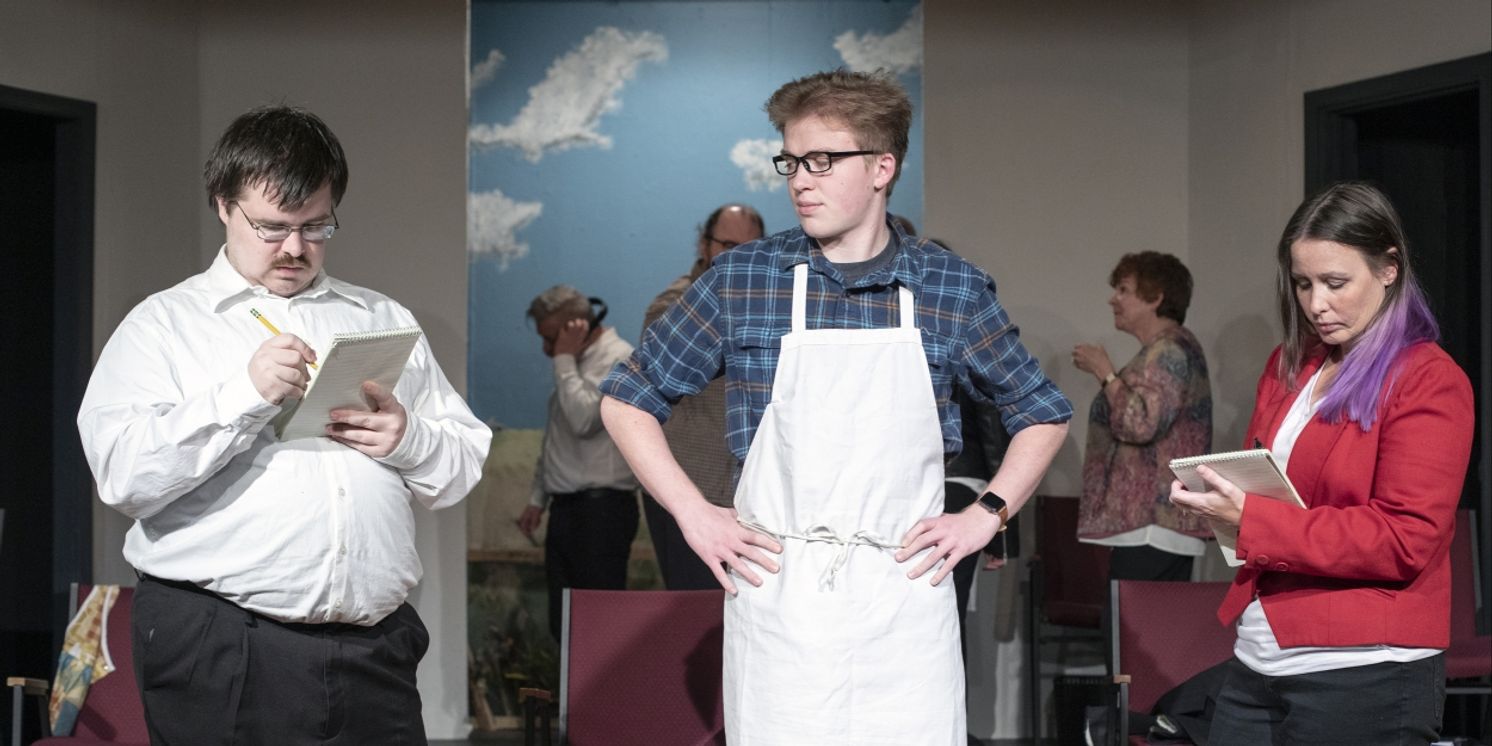Review: THE LARAMIE PROJECT at Oyster Mill Playhouse
Through November 20th, audiences can see this important and riveting play.

In 1998, University of Wyoming student Matthew Shepard was murdered in Laramie, Wyoming. Matthew, a 21-year-old gay man, was beaten, robbed, and tortured. A few days after he was found and taken to the hospital, Matthew died of his injuries. This murder gained national and international attention and spurred human rights activists to fight for the inclusion of sexual orientation in hate crime legislation. Matthew's story has been explored in numerous books, documentaries, and films. The stage play, The Laramie Project, by Moises Kaufman and members of the Tectonic Theatre Project, premiered in 2000. The play is in the verbatim style, in which actors take on a variety of characters who speak the actual words of people interviewed about their experiences and reactions to an event. The Laramie Project is presented in three acts in which the audience meets over sixty characters. The characters include not only the townspeople who were interviewed, but also the members of the Tectonic Theatre Project who visited Laramie multiple times to conduct the interviews. Through November 20th, audiences can see this important, riveting, and heart-wrenching play at Oyster Mill Playhouse.
As the audience enters the theatre, their attention is immediately captured by the many large photos on the walls all around the auditorium and on the stage. As director Lois E. Heagy explains in her introduction, these photos are of people from Laramie, Wyoming (not those portrayed in the play). These photos are displayed throughout the theatre in order to make the audience feel as though they are part of the community of Laramie, Wyoming. This is a creative and unique way of highlighting the parts of the show where the various characters talk about how they feel about the idea of a play about their town and the events that happened there. The stage itself is set so that the image of the landscape with the fence where Matthew was tied up is ever-present-just like many of the interviewees commented that the murder itself became something that was ever-present to the people in the town due to the intense media coverage.
The cast includes Chuck Bagley, Colleen Barno, George Baumer, Craig Copas, Renee Howard, Glenn Muir, William O'Donnell, Nancy Parson, Allison States, Aiden Storm, Logan W. Uhrich, Stephanie Via, and Sam Wilkins. The talent in this cast is simply tremendous. Every single actor delivers an engaging, authentic, and emotional performance. As they transition from character to character, they not only make simple costume changes to indicate that they are someone different, but they also change their expression, posture, gestures, and voice to fit each character. The audience can tell immediately from their stance and voice who they are in that moment. Under Heagy's direction, the play moves seamlessly from scene to scene, carrying the audience along as the characters talk about what kind of community Laramie is, the impact of Matthew's beating and subsequent death on the town and the people living there, the trial, and the impact that the interviews had on the members of the Tectonic Theatre Project.
The way the cast members embody the characters makes this production intensely emotional, bringing the audience to tears-tears for what happened to Matthew, tears for the loss his family and friends experienced, tears for those who were so determined to do everything they could to bring about justice, tears for the fact that we know that the hatred that led to Matthew's death still permeates society today.
The Laramie Project tells a story that is as important today as it was in the aftermath of the events on which it focuses. It is a story that reminds us of how far we still have to go in our striving for justice and equality. The cast and crew at Oyster Mill Playhouse bring this story to life in a way that speaks to the heart and soul. Visit oystermill.com for more information.
Photo Credit: Nicole Dube
Reader Reviews

Videos

